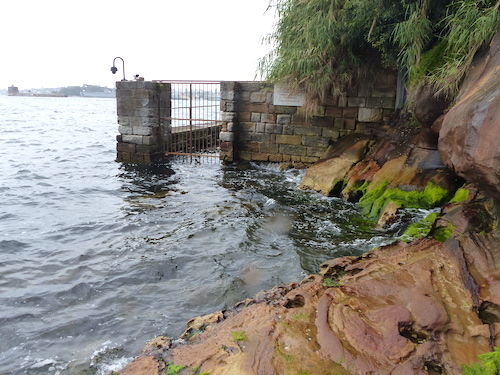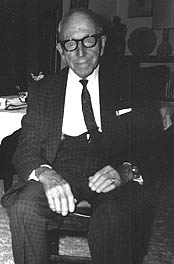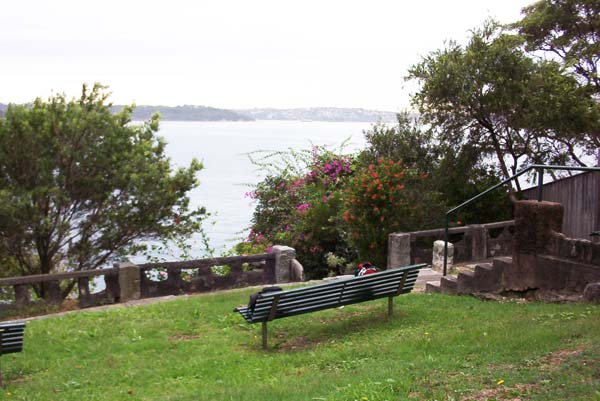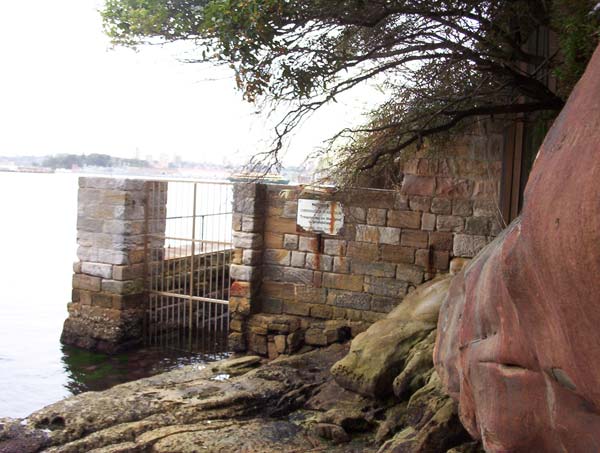
In early 2007 I went for a walk with my brother to some childhood haunts which I knew intimately when we lived in North Sydney. We started from Milson’s Point railway station, late in the autumn morning.
With the Sydney Harbour Bridge dominating the sky, we went and found Garth Terrace, in Jeffery Street, Kirribilli. This was the former home of an old family friend, the late Thomas McCarthy. He had lived there in 1897. From there we planned to walk around to a special childhood place called Lady Gowrie Lookout.

Mr McCarthy used to visit this same, then unnamed vantage point back in the late 1890s and observe the multitude of maritime activities on Sydney Harbour. His watercolour paintings of ferries and other vessels were possibly the outcome of some of these visits.
Today Jeffery Street is squashed beside the sprawling architecture of St Aloysius College. As if desperate for air, the street makes its way directly to the harbour foreshore, almost opposite the Sydney Opera House. As we approached the water, an uninterrupted view was revealed of the Harbour Bridge which has always been in our memory.
The constant hustle and bustle, from the city across the water, was regularly punctuated by a helicopter’s engine, as it swept backwards and forwards above us. The previous night, a ferry and a pleasure craft had collided under the Bridge. Fatalities had occurred and a teenage girl was still missing.
We walked part of the way along a boardwalk with picture postcard views of the harbour and its many built wonders. Teasing glimpses of the Opera House sails could be seen in the gaps between the high rise apartments, as we proceeded to Lady Gowrie Lookout.
Named after a former Governor-General’s wife, the lookout is situated at the eastern end of Kirribilli Avenue, next to Kirribilli House which is the official Sydney residence of Australia’s Prime Minister. Admiralty House, the official Sydney residence of the Governor-General of Australia, is on the same block of land as Kirribilli House, at Kirribilli Point.
Background to the naming of this lookout makes interesting reading in the newspaper reports of the day. In 1939, Lady Gowrie asked North Sydney Council to beautify what she viewed as a rather dreary looking Kirribilli Avenue. She suggested that Jacaranda trees should be planted along this important access route to Admiralty House. The urgency of her request was prompted by the pending arrival of the Duke and Duchess of Kent.
On a visit to Grafton a couple of years before, Lady Gowrie had been very impressed by the beauty of the Jacaranda trees she saw there. Indeed, she considered the Jacaranda ‘the loveliest tree of all, right through the seasons’. The Mayor of Grafton offered to provide North Sydney Council with the trees, propagated from seedlings from Grafton’s Jacarandas. While declining her request on the grounds of their unsuitability for the location, North Sydney Council did agree to plant the donated Jacarandas not far away in McDougall Street. This street runs next to Milson Park. Perhaps in some way to assuage Lady Gowrie’s disappointment with their decision, the Council did some extra ‘beautification’ work in Kirribilli Avenue. They removed two Morton Bay Fig trees on the avenue’s eastern end, next to Kirribilli House. This action opened up the access to an expansive harbour view, which the Council diplomatically proposed to name Lady Gowrie Lookout, thus keeping everybody happy.
Jon Cleary’s Scobie Malone detective novel The Dragons of the Party begins with an attempted assassination in the grounds of Kirribilli House. The attempt is made from a block of flats opposite. All this fictitious intrigue unfolds within a stone’s throw from Lady Gowrie Lookout. I sometimes wonder when I go there how close Cleary’s imagined assassin positioned himself to another neighbouring building. The latter was formerly a private hospital where my mother was admitted a couple of times in the early 1990s before her death.
The lookout really comprises a series of lookouts on grassed terraces that descend to the water’s edge. Immediately across the harbour is the little, rocky outcrop on which sits Fort Denison.
The morning I returned there with my brother, ferries regularly ploughed through the water in front of us, creating waves that reached the lookout’s sandstone base. I have a picture of me as a teenager, standing on that same rock platform. While we took in the harbour views, a noticeable stench of sewage could be smelt, leeching from the sandstone rocks behind us. Then a mist of rain fell and we left the lookout in search of shelter.
In the second half of the 1960s I often used to walk from home and spend time reading at Lady Gowrie Lookout. I did a considerable amount of thinking there as well, especially about the then government’s questionable military commitment in Vietnam, the introduction of conscription to support that involvement and the blind acceptance of American foreign policy. Sadly, the foreign policy of today’s government seems just as tragically flawed. Some things stay the same, despite the lessons of the past.
I continue to be drawn back to Lady Gowrie Lookout and and I’m always warmed by its view.
© Jim Low





